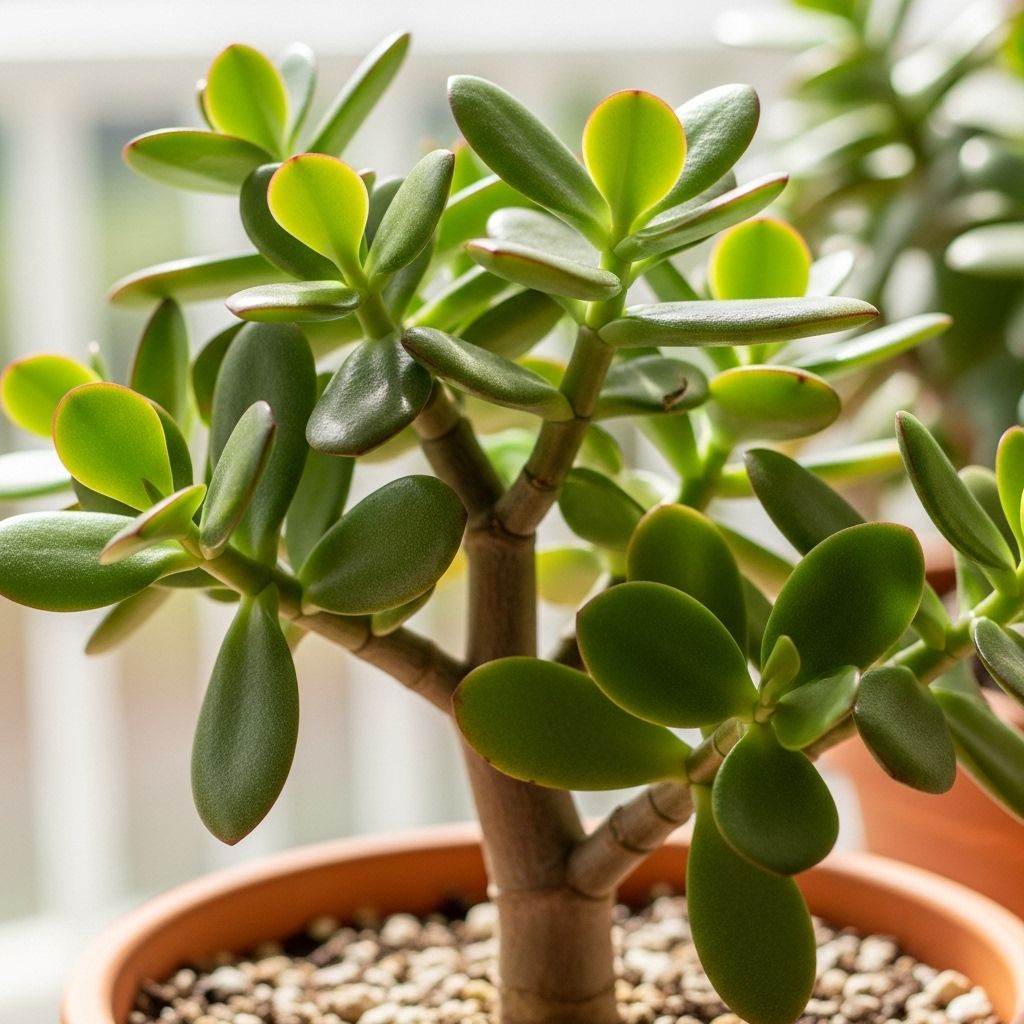Crassula ovata: A Comprehensive Guide to Jade Plant Care
Balanced light and attentive watering lay the foundation for succulents to flourish.

Image: HearthJunction Design Team
Introduction to Crassula ovata: The Jade Plant
Crassula ovata, commonly known as the Jade Plant, is a popular succulent native to South Africa and Mozambique. It is widely cultivated as an indoor plant due to its adaptability, low maintenance requirements, and its reputation for bringing good fortune. This article will guide you through the essentials of Jade Plant care, covering light, water, soil, temperature, fertilization, pruning, and pest management.
## Light Requirements
–
Optimal Lighting
: The Jade Plant thrives in bright, indirect sunlight. While it can tolerate a few hours of direct sunlight, excessive direct exposure can cause leaf scorching.–
Adaptability
: It can grow well under various lighting conditions but tends to stretch (etiolate) if not provided with sufficient light.## Watering Your Jade Plant
–
Soil Moisture
: Water your Jade Plant when the top inch of soil is dry to the touch. This ensures the plant receives enough moisture without risking root rot.–
Seasonal Adjustments
: During winter, reduce watering frequency as the plant enters a semi-dormant state.## Soil and Repotting
–
Well-Draining Soil
: Use a cactus or succulent mix to prevent waterlogged soil. Adding peat moss and organic matter can enhance the soil’s water-holding capacity while maintaining drainage.–
Repotting
: Jade Plants should be repotted every few years in the spring to refresh the soil and provide a larger pot if necessary.## Temperature Preferences
–
Optimal Range
: Jade Plants prefer daytime temperatures between 65-75℉ (18-24°C) and nighttime temperatures of 50-55℉ (10-13°C).–
Tolerance
: They can tolerate temperatures as low as 10°C but should be protected from cold drafts.## Fertilization
–
Balanced Fertilizer
: Feed your Jade Plant with a balanced, water-soluble fertilizer every 2-3 months during the growing season (spring and summer). Avoid fertilizing during the dormant winter months unless there are clear signs of growth.## Pruning and Propagation
–
Pruning
: Prune regularly to maintain shape and remove any dead or yellowing leaves. Pruning also encourages new growth.–
Propagation
: Propagate Jade Plants using stem cuttings. Simply remove a healthy stem section, allow it to dry slightly, and plant it in well-draining soil.## Pest Management
–
Common Pests
: While Jade Plants are generally pest-free, they can be susceptible to mealybugs and spider mites. Monitor for signs like webbing or cotton-like substances on leaves and treat promptly if infested.## Frequently Asked Questions (FAQs)
Q: How often should I water my Jade Plant in the summer?
A: In the summer, Jade Plants require more frequent watering but only when the top inch of soil is dry to the touch. Avoid overwatering, which can lead to root rot.
Q: What is the ideal fertilizer for Jade Plants?
A: Use a balanced, water-soluble fertilizer during the active growing seasons (spring and summer). Avoid fertilizing during the winter unless there are signs of new growth.
Q: How do I propagate a Jade Plant?
A: Jade Plants can be easily propagated using stem cuttings. Remove a healthy section of stem, allow it to dry slightly, and plant it in well-draining soil until roots develop.
## Conclusion
Crassula ovata is an excellent choice for beginners and experienced gardeners alike due to its resilience and low maintenance requirements. By following these care guidelines, you can ensure your Jade Plant remains healthy and flourishes for years to come.
References
- https://www.botanicalboys.com/pages/care-guide-crassula-ovata
- https://www.ambius.com/resources/blog/plant-profile/jade-plant-care
- https://www.plantsavvy.com/blog/jade-plant-basic-care-tips
- https://www.gardenersworld.com/house-plants/how-to-grow-a-jade-plant-crassula-ovata/
- https://hort.extension.wisc.edu/articles/jade-plant-crassula-ovata/
Read full bio of Shinta












